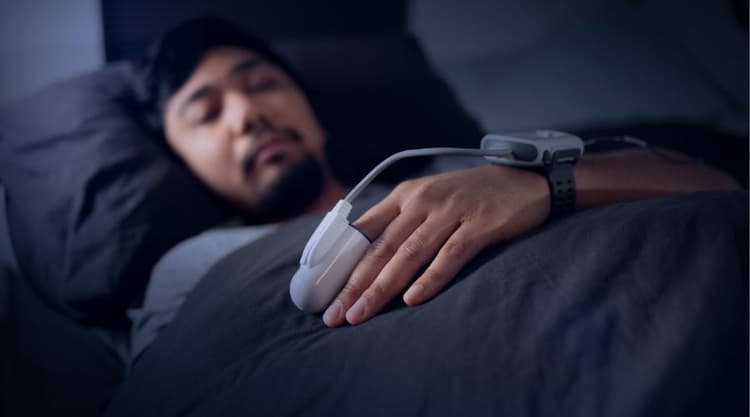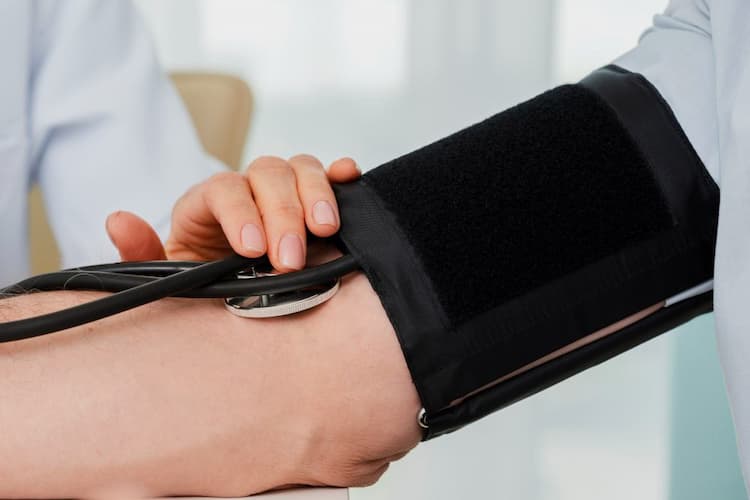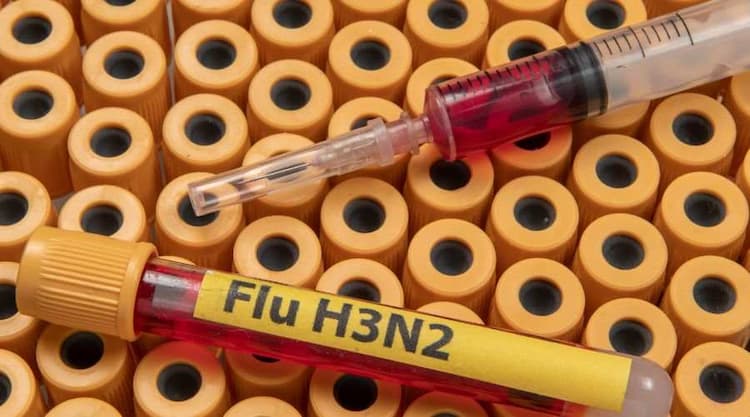Hyperhidrosis - meaning, symptoms, causes, and treatments

Medically Reviewed By
Dr Divya Rohra
Written By Prekshi Garg
on Aug 7, 2022
Last Edit Made By Prekshi Garg
on Mar 17, 2024

Hyperhidrosis is a medical condition that is characterised by excessive sweating from certain parts of your body. This condition can lead to detrimental psychological effects and make you embarrassed in public places. It is often seen that hyperhidrosis interferes with the personal lifestyle choices of the individual as well. Hyperhidrosis is a very common condition diagnosed in various people acround the world. According to the International Hyperhidrosis Society, this condition has been diagnosed in around 5% of the total world’s population, that is, almost 365 million people across the globe suffer from Hyperhidrosis. Talking about tropical countries, it is estimated that the reported cases of hyperhidrosis are seen in as high as 1.5% to 9%. Since hyperhidrosis does not cause any pain or discomfort physically, you might think it unnecessary to get treated or you might not even know that it is a medical condition that can actually be treated through medical care.
In this article, let us highlight everything there is to know about hyperhidrosis, like what is hyperhidrosis, what are its types and its symptoms, why it is caused, and what are the various treatment options that are available for hyperhidrosis.
What is hyperhidrosis?
Hyperhidrosis often termed sudorrhea or polyhidrosis which refers to a condition of excessive sweating. Hyperhidrosis is not a life-threatening condition, but it can make you feel uncomfortable and embarrassed in public settings. This condition generally develops when you are in your adolescent stage. However, the condition can also be present from birth as well. Excessive sweating can occur either from one specific area (focal hyperhidrosis) or from the whole body (generalised hyperhidrosis). The most common body parts where hyperhidrosis may occur include the face, hands, armpits, feet, and groin because of the presence of a higher concentration of sweat glands in these areas.
Hyperhidrosis though not damaging or painful, can actually affect your living. Excessive sweating can often interfere with your decisions related to free time activities, career choices, self-image, personal relationships, and emotional well-being as well.
What are the symptoms of hyperhidrosis?
Hyperhidrosis or excessive sweating can occur in episodes. Generally, people with hyperhidrosis experience excessive sweating at least once a week which is without any major reason or cause. The major signs and symptoms of hyperhidrosis that you might experience include:
- Wet or clammy soles of your feet
- Wet or clammy palms of your hands
- Sweat that soaks through your clothes making them noticeable
- Frequent sweating
Apart from these symptoms, people with hyperhidrosis can also experience some other social and psychological effects that include:
- The constant tension of getting clothes stained with sweat
- Fungal or bacterial skin infection
- The feeling of self-consciousness
- Being reluctant of making physical contact with anyone
- Withdrawing yourself from social places may further lead to depression
- Worry about body odour
- Keep on taking steps the whole day to deal with sweat
- Choose a career option and activities that do not involve much physical contact
What are the causes of hyperhidrosis?
Hyperhidrosis can occur due to a certain underlying health condition or can also be unexplained, that is, no apparent cause for the development of the disease is diagnosed. Based on the causes that can lead to hyperhidrosis, the condition is classified into two types, that is, primary idiopathic hyperhidrosis and secondary hyperhidrosis.
Primary idiopathic hyperhidrosis
When there is no underlying health condition or cause diagnosed for hyperhidrosis, then the condition is termed primary idiopathic hyperhidrosis, that is, unexplained hyperhidrosis. Primary hyperhidrosis is generally localised, that is, the sweating occurs from a specific body part like the hands, feet, armpits, or the groin area. In primary hyperhidrosis, the sweat comes from a specific type of sweat gland known as eccrine sweat glands. These sweat glands are activated by nerves under certain conditions, like when your body is overheated, when you are emotional when you are moving around, or in response to certain hormones. When the nerves overreact, it results in hyperhidrosis. Some studies also link hyperhidrosis to genetics. According to them, there are certain genes that play a role in the development of hyperhidrosis and therefore, the condition is inherited.
Secondary hyperhidrosis
Secondary hyperhidrosis refers to the excessive sweating caused due to an underlying medical condition. In secondary form, hyperhidrosis occurs generally from all over or from one general area. In secondary hyperhidrosis, sweating generally occurs during sleep. Some of the medical conditions that can lead to hyperhidrosis include:
- Diabetes
- Pregnancy
- Menopause
- Hyperthyroidism
- Obesity
- Anxiety
- Rheumatoid arthritis
- Parkinson’s disease
- Gout
- Lymphoma
- Shingles
- Infection
- Respiratory failure
- Heart attack or heart failure
- Alcohol abuse
- Medicines like antidepressants, Alzheimer’s drugs, pilocarpine used for glaucoma, and diabetes drugs like sulfonylureas and insulin
How is hyperhidrosis diagnosed?
You may observe excessive sweating on your own. However, for an adequate treatment of this condition, it is necessary that you know the underlying cause of hyperhidrosis, therefore, there are certain diagnostic tests that your doctor might recommend to you. These tests include:
- Starch iodine test: In this test, an iodine solution is applied to the part of your body that has excessive sweating, and then starch is sprinkled over it. In most likely cases, the solution will turn blue.
- Paper test: This test is done to determine how much you are sweating. In this test, a special paper is kept on the infected area and then later weighed.
How is hyperhidrosis treated?
Hyperhidrosis is generally treated on the basis of the type of hyperhidrosis and the underlying medical condition that is causing hyperhidrosis. The treatment also depends on the area of your body where excessive sweating is occurring. Following are the various treatment options available for hyperhidrosis.
Antiperspirants
These are generally the first treatment options recommended by the doctors. The use of affordable regular or clinical-strength antiperspirants can prove to be effective against excessive sweat. However, if you have a really high degree of sweating, your doctor might prescribe you a stronger antiperspirant. The use of the right antiperspirant in the correct manner has proved to be effective in major cases. Antiperspirants can be applied to hands, underarms, feet, or hairlines. Antiperspirants are applied on top of the skin. The sweat coming out from the sweat glands pulls the antiperspirant into the glands. This clogs the gland thereby, signalling the body to stop producing so much sweat. Antiperspirants are safe to use. It can cause some mild side effects like irritation or a burning sensation on the skin.
Iontophoresis
Iontophoresis is also known as the no-sweat machine. This process is used if you have hyperhidrosis in your hands or feet. This process is done at home. In this treatment you soak your infected part into a shallow pan of tap water and a medical device is used to send a low voltage current through the water. The low voltage electric current used in this treatment temporarily shuts the sweat glands. You might require a minimum of 6-100 sessions to see the results. Initially, the treatment is done 2-3 times a week for 20-40 minutes. Once you start seeing the results, you can do the treatment as and when required. The major side effect of this treatment is that some people can find it time-consuming. Other than that you might also feel dry, irritated skin, or discomfort while the treatment is going on.
Botulinum toxin injections
Botulinum toxin is a well-known treatment these days that is widely used for various skin treatments. The weak dose of this botulinum injection can be given to you by your dermatologist. Botulinum toxin is currently approved by the US Food and Drug Administration (FDA) for its usage in the treatment of hyperhidrosis occurring in the underarms only. However, research is going on for its use, effectiveness, and safety in other body parts as well. Botulinum toxin works by blocking the chemical that stimulates the sweat glands. You might observe the results of the treatment after 4-5 days and these results may last for 4-6 months. Temporary muscle weakness may occur after this treatment which goes away in some time.
Prescription cloth wipes
This method is used for the treatment of hyperhidrosis occurring in the underarms in individuals who are above 9 years of age as per the guidelines of the U.S. Food and Drug Association (FDA). These are wrapped clothes that contain a compound known as glycopyrronium tosylate, that can help reduce the sweating occurring in the underarms. You can use one wipe per day for treating both your underarms. There are some minor side effects related to this process including redness on the treated skin, dry mouth, and a burning or stinging sensation.
Prescription medicine
Your dermatologist might also prescribe you certain medicines that can help in preventing excessive sweat. These medicines are not confined to a single area and can thus help in treating sweating throughout your body. These medicines work by preventing the sweat glands from performing their function. These medicines are generally not prescribed to people who live in a hot climate or who are athletes. Certain si9de effects that are associated with the intake of medicines include dry eyes or mouth, abnormal heartbeat or heart palpitations, and blurry vision. Consult your dermatologist before you take any medicine as the higher doses of these medicines can lead to more severe side effects.
Surgery
Surgery is generally considered the last resort for treating hyperhidrosis. The possible surgeries for treating hyperhidrosis include surgical removal of the sweat glands and sympathectomy. The results of the surgery are permanent but it may carry some risks.
Surgical removal of sweat glands
The surgical removal of the sweat glands is generally done for treating hyperhidrosis of the underarm area. In surgical removal of the sweat glands, they are to be treated and numbed and then the sweat glands are removed. The removal of the sweat glands can be done through various surgical techniques like
- Excision that involves cutting out the sweat glands
- Liposuction involves the removal of the glands through suction
- Curettage, that is, scraping out the sweat glands
- Laser surgery that involves vaporisation of the sweat glands.
Sympathectomy
It is a major surgery done to treat hyperhidrosis wherein the nerves that signal the sweat glands to produce sweat are targeted and stopped. For this process, these nerves are cut or destroyed by the insertion of a surgical camera into the chest of the patient just beneath the underarm. The lungs of the patient are made to collapse temporarily so that the nerves can be cut and destroyed. This treatment process is used for treating hyperhidrosis of the palms.
The surgical methods of treating hyperhidrosis can have some side effects. Although the advances made in the field of endoscopy try to limit the risks associated with the surgery, there are still certain side effects that can occur. These side effects include:
- Chances of infection
- Soreness
- Bruising
- Loss of feeling in the underarm
- Scarring
- Compensatory sweating can also occur which is characterised by more heavy sweating that it used to occur before the surgery
- Damage to the nerves that run between the brain and the eyes
- Low blood pressure
- Reduced ability to tolerate heat
- Irregular heartbeat
Hand-held medical device
This is an extremely new method approved by the U.S. Food and Drug Administration (FDA) used for the treatment of hyperhidrosis. In this method, a machine is used that emits electromagnetic energy that helps in destroying the sweat glands. This is a permanent treatment option, as once the w=sweat gland is destroyed, they do not reoccur. The only limitation with this treatment is that it can only be used in your underarms as that part of your body contains enough fat to protect itself. Being a recent treatment option, the information related to the long-term effects of this treatment, and the longevity and effectiveness of the results of this treatment is still not known.
Takeaway
Hyperhidrosis is a very common condition that occurs in people. Individuals often don’t know that it is a condition that can be treated through medical attention and thus most people live with it thinking that it cannot be treated. Now that you know what hyperhidrosis is, its types, its symptoms, its causes, and the various treatment options available for hyperhidrosis make sure that you consult your dermatologist about this condition and get it treated. Also, pass this information to other people as well so that they know that it is a commonly occurring condition that you do not need to be embarrassed about. Getting the right consultant can help you get your problem resolved.
Frequently Asked Questions (FAQs)
-
Can hyperhidrosis be passed down in families?
Yes, a genetic link has been observed in hyperhidrosis because focal hyperhidrosis runs in the family. Therefore, the members of the same family can have hyperhidrosis due to genetic factors.
-
Is hyperhidrosis a serious condition?
No, hyperhidrosis is generally not a serious condition but it should be treated to reduce your embarrassment in the public areas and the discomfort that excessive sweating can cause you.
-
How can I manage excessive sweating?
Excessive sweating can be managed by various steps like:
- Use antibacterial soap for bathing
- Dry yourself completely
- Use antiperspirant
- Place underarm liners or shoe inserts that can absorb sweat and prevent your clothes from staining.



